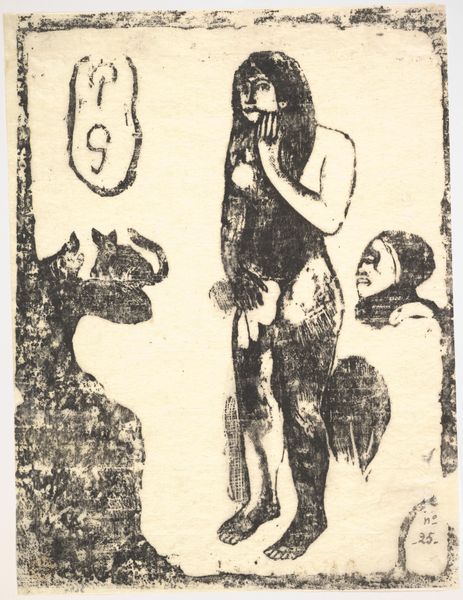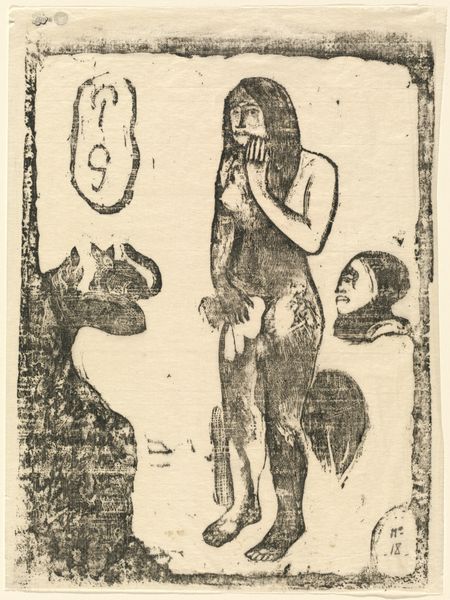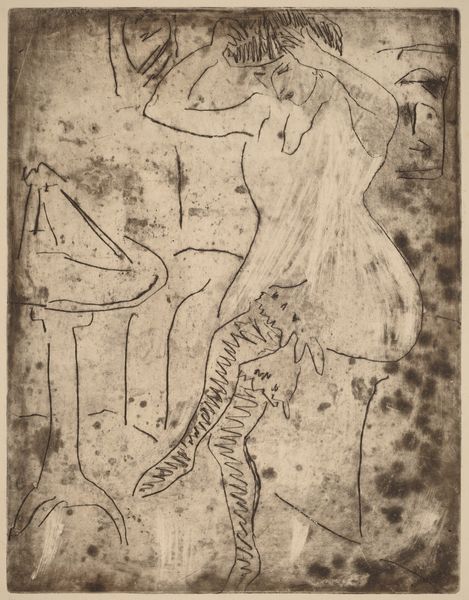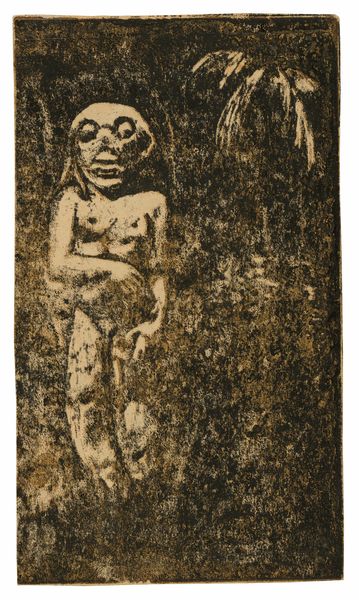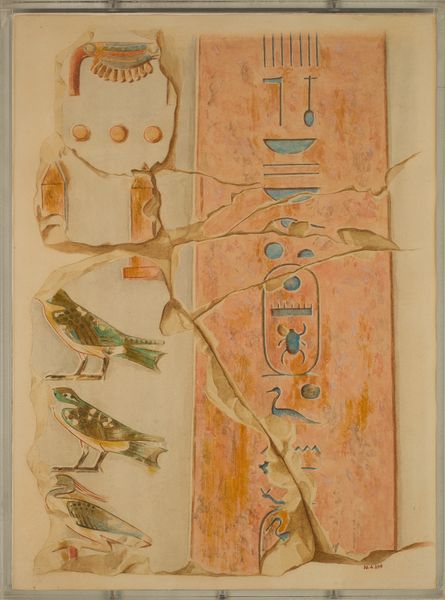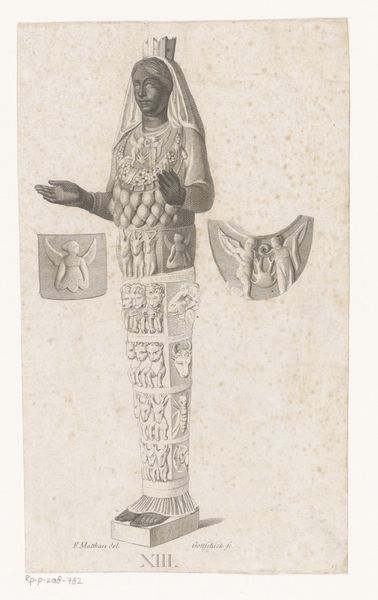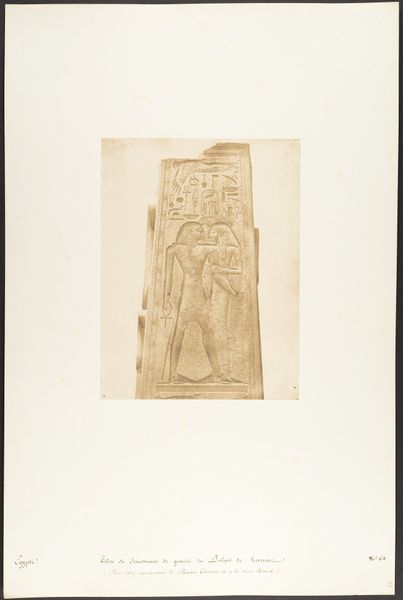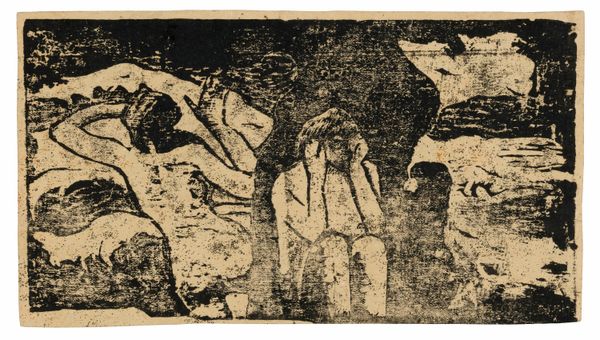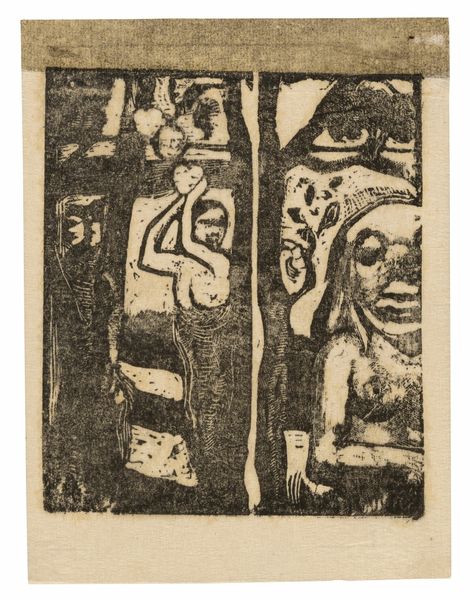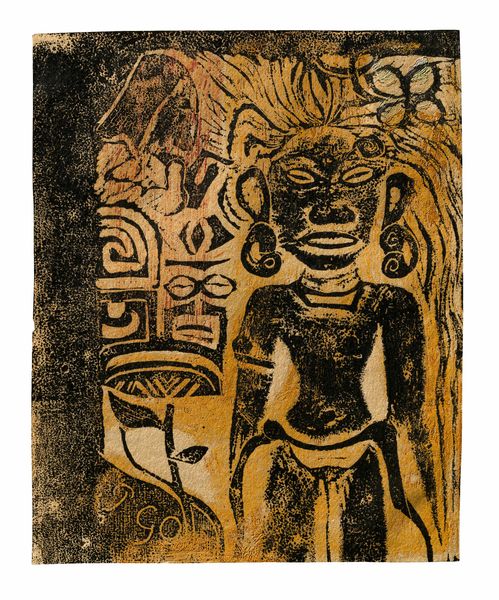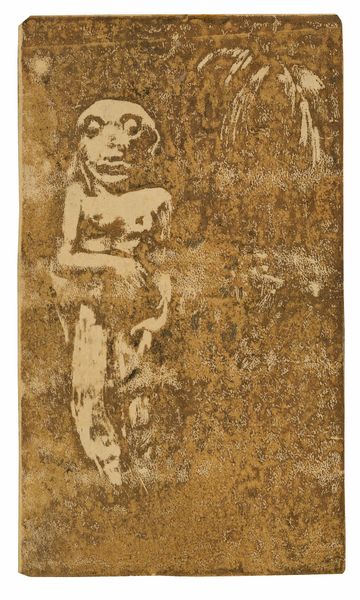
drawing, print, ink, woodcut
#
drawing
#
ink drawing
# print
#
figuration
#
ink
#
woodcut
#
symbolism
#
nude
Dimensions: image: 11 1/16 x 8 7/16 in. (28.1 x 21.4 cm) sheet: 12 1/16 x 8 13/16 in. (30.6 x 22.4 cm)
Copyright: Public Domain
This is Paul Gauguin’s woodcut print, "Eve," made sometime in the 1890s. Gauguin created this print during a period of intense exploration of Polynesian themes, aiming to capture the essence of what he saw as a primal, unspoiled existence. Here, Eve isn't just a figure from Judeo-Christian myth; she's been reimagined through Gauguin’s colonial gaze. You’ll notice the Tahitian woman at the right, subtly challenging conventional European beauty standards. Gauguin attempts to intertwine biblical narrative with his experiences in Tahiti, complicating the concept of paradise and innocence. As Gauguin once said, "I am simplifying more and more...seeking only what is essential." But let's be critical of this simplification. Gauguin's work can be seen as romanticizing an exotic "other," a reflection of the colonial attitudes prevalent during that time. What does it mean to represent a culture that isn't your own, especially when there's an imbalance of power? Consider this as you ponder the emotional and personal dimensions of the piece.
Comments
No comments
Be the first to comment and join the conversation on the ultimate creative platform.
